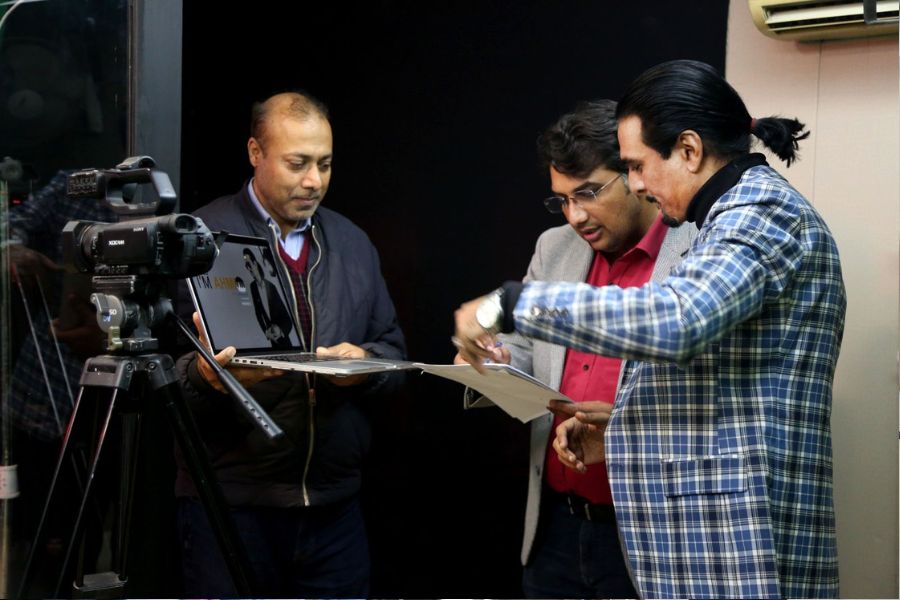Table of Content
- Introduction to Scriptwriting
- Understanding the Basics
- Crafting Compelling Characters
- Perfecting Dialogue
- Building Engaging Narratives
- The Art of Visual Description
- Understanding Structure and Pacing
- Embracing Feedback and Revision
- Resources for Aspiring Screenwriters
- Conclusion
- FAQs
Introduction to Scriptwriting
Scriptwriting is the backbone of any successful film. It’s the blueprint that guides directors, actors, and crew members in bringing a story to life on the silver screen. As a filmmaker, mastering the art of scriptwriting is essential for creating compelling and memorable movies.
1. Understanding the Basics
Before delving into the intricacies of scriptwriting, it’s crucial to grasp the basics. Formatting guidelines play a significant role in ensuring that your screenplay is professional and easy to read. Elements such as scene headings, action lines, and dialogue formatting must be executed with precision. Below resources provide comprehensive guidance on script formatting, covering everything from scene headings to dialogue formatting, essential for crafting a professional screenplay.
2. Crafting Compelling Characters

Characters are the heart and soul of any screenplay. Whether it’s a hero embarking on a journey of self-discovery or a villain plotting to take over the world, compelling characters drive the narrative forward. As a filmmaker, focus on developing characters that audiences can connect with on an emotional level.
Motivations: What makes them do things (like Andy Dufresne in “Shawshank Redemption”)
Personality: Things they’re not so good at (Flaws), things they’re good at (Strengths), and unique habits (quirks) (like Captain Jack Sparrow)
Backstory: Things that happened to them before that make them who they are (like The Bride in “Kill Bill”)
Emotions & Conflict: How they feel inside and the problems they face (like Luke Skywalker in “Star Wars”)
3. Perfecting Dialogue
Dialogue is another essential aspect of scriptwriting. Natural-sounding dialogue can breathe life into your characters and make the audience feel like they’re eavesdropping on real conversations. Pay attention to the rhythm and cadence of speech, and strive to make every line count.
Natural flow: The dialogue feels like a real conversation, with short replies, laughter, and playful banter.
Character revelation: The conversation reveals Sarah’s optimistic personality and John’s teasing nature.
Moving the plot forward: The last line suggests there’s more to come in the story, keeping the audience engaged.
4. Building Engaging Narratives
A captivating storyline is what keeps audiences glued to their seats. As a filmmaker, it’s your job to craft narratives that are both compelling and unpredictable. Experiment with plot twists, character motivations, and thematic elements to keep viewers on the edge of their seats.
5. The Art of Visual Description
In addition to dialogue and narrative, visual description is crucial for conveying the mood and atmosphere of a scene. Use vivid language to paint a picture in the reader’s mind, allowing them to visualize the action as if they were watching it unfold on screen.
Focus on key details: Don’t try to describe everything. Choose details that are most important to the mood and atmosphere you want to create.
Use strong verbs and adjectives: Avoid bland words like “big” or “small.” Use verbs and adjectives that evoke strong imagery.
Appeal to multiple senses: Don’t just rely on sight. Use words that describe sounds, smells, textures, and even tastes to create a more immersive experience for the reader.
ii). A Picture Is Worth 300 Words: Writing Visual Descriptions for an Art Museum Web Site.
6. Understanding Structure and Pacing

Structure and pacing are the backbone of storytelling. Familiarize yourself with the three-act structure, and use it as a roadmap for crafting your screenplay. Additionally, pay attention to pacing, ensuring that your script maintains a steady rhythm from beginning to end.
Structure & Pacing:
Three-Act: Imagine your story in 3 parts: Set-up, Confrontation & Resolution. Each with its own pacing (slow beginning, fast middle, slower satisfying end).
Example: Astronaut fixes spaceship during meteor shower.
Act 1: Introduce routine,
Act 2: Shower creates danger,
Act 3: Fix & relief.
7. Embracing Feedback and Revision
No screenplay is perfect on the first draft. Embrace feedback from peers, mentors, and industry professionals, and use it as fuel for revision. Be open to making changes and reworking scenes until every aspect of your script shines.
8. Resources for Aspiring Screenwriters

Fortunately, aspiring screenwriters have access to a wealth of resources to help them hone their craft. From books and online courses to networking opportunities and screenwriting competitions, there are countless avenues for learning and growth in the world of scriptwriting.
Conclusion
Mastering the art of scriptwriting is a journey filled with challenges and rewards. By understanding the basics, crafting compelling characters, and honing your dialogue and narrative skills, you can create screenplays that captivate audiences and stand the test of time. Remember, the pen may be mighty, but it’s the screen that brings your words to life.
FAQs
1. What software do I need for scriptwriting?
There are several software options available for scriptwriting, including Final Draft, Celtx, and Scrivener. Choose the one that best fits your needs and budget.
2. How long should a screenplay be?
A typical screenplay is around 90 to 120 pages, with one page roughly equaling one minute of screen time. However, this can vary depending on the genre and pacing of your story.
3. Is it necessary to attend film school to become a successful screenwriter?
While film school can provide valuable education and networking opportunities, it’s not a prerequisite for success. Many successful screenwriters have forged their own paths through self-study and perseverance.
4. How do I protect my screenplay from theft?
To protect your screenplay, consider registering it with the Writers Guild of America or the U.S. Copyright Office. Additionally, only share your script with trusted individuals and industry professionals.
5. What should I do if my screenplay gets rejected?
Rejection is a common part of the filmmaking process. Instead of dwelling on rejection, use it as an opportunity to learn and improve your craft. Keep writing, keep revising, and never give up on your dreams.

